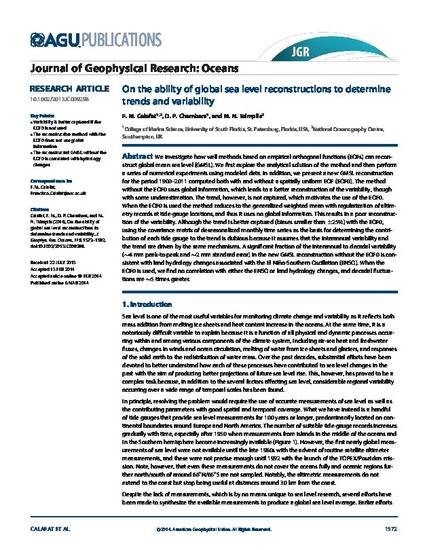
- sea level,
- reconstruction,
- variability,
- tide gauge,
- trend,
- ENSO
We investigate how well methods based on empirical orthogonal functions (EOFs) can reconstruct global mean sea level (GMSL). We first explore the analytical solution of the method and then perform a series of numerical experiments using modeled data. In addition, we present a new GMSL reconstruction for the period 1900–2011 computed both with and without a spatially uniform EOF (EOF0). The method without the EOF0 uses global information, which leads to a better reconstruction of the variability, though with some underestimation. The trend, however, is not captured, which motivates the use of the EOF0. When the EOF0 is used the method reduces to the generalized weighted mean with regularization of altimetry records at tide-gauge locations, and thus it uses no global information. This results in a poor reconstruction of the variability. Although the trend is better captured (biases smaller than ±25%) with the EOF0, using the covariance matrix of deseasonalized monthly time series as the basis for determining the contribution of each tide gauge to the trend is dubious because it assumes that the interannual variability and the trend are driven by the same mechanisms. A significant fraction of the interannual to decadal variability (∼4 mm peak-to-peak and ∼2 mm standard error) in the new GMSL reconstruction without the EOF0 is consistent with land hydrology changes associated with the El Niño-Southern Oscillation (ENSO). When the EOF0 is used, we find no correlation with either the ENSO or land hydrology changes, and decadal fluctuations are ∼5 times greater.
Journal of Geophysical Research: Oceans, v. 119, issue 3, p. 1572-1592
©2014. American Geophysical Union. All Rights Reserved.Available at: http://works.bepress.com/don_chambers/61/
